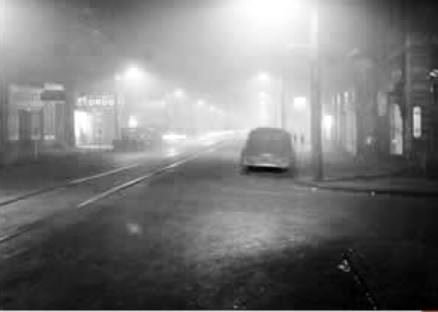
Donora Smog Disaster
Tucked into the southwest corner of the Commonwealth lies the town of Donora. The Monongahela River winds through 400-feet tall hills here, creating a deep valley. By the 1900s, Donora had a lot of heavy industry, including a zinc smelting plant, steel mills, and coal burning trains. The town’s name in fact comes from two Union Steel Company magnates who purchased land in the area: W.H. Donner, and Nora Mellon, wife of R.B. Mellon.
On October 30 and 31, 1948, an unusually thick, low-lying fog hung over the town. During that same time, nineteen people died and approximately 500 residents became ill. To date, the cause(s) of the disaster are debatable, but there is a strong chance that existing air pollution was trapped near the ground due to the dense fog, killing the elderly and sick and harming nearly everyone else nearby.
Residents such as Lois Bainbridge had complained about the industrial pollution that, “eats the paint off your houses” and prevents fish from living in the river. She observed that when the smelting plant closed briefly after the disaster, “you could breathe normally.” She proposed the installation of more modern equipment that “would help consume the fumes,” as factories in Pittsburgh had done recently.
Those measures would be costly, but politicians recognized the need to act. In 1949, the state established the Division of Air Pollution Control to study the issue. It took many years, but the legislature passed the clean streams law in 1965 and statewide clean air regulations the following year. In 1970, the “Environmental Bill of Rights” was passed, which stated that “the people have a right to clean air, [and] pure water…”
To learn more about what happened in Donora, visit https://www.youtube.com/watch?v=IKDpNTNm1Cc or listen to an NPR podcast here.
